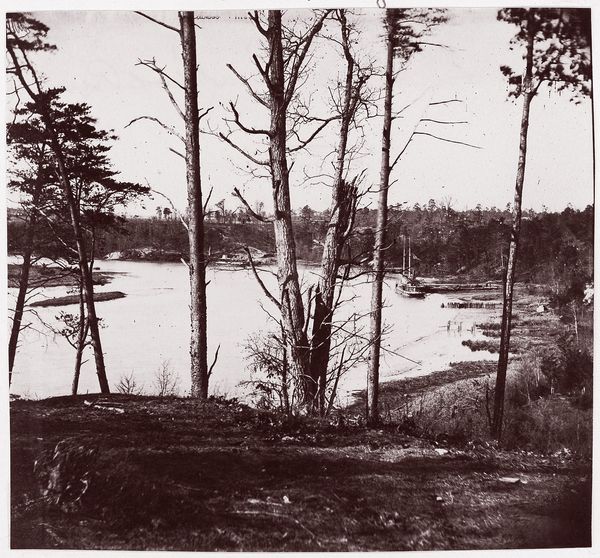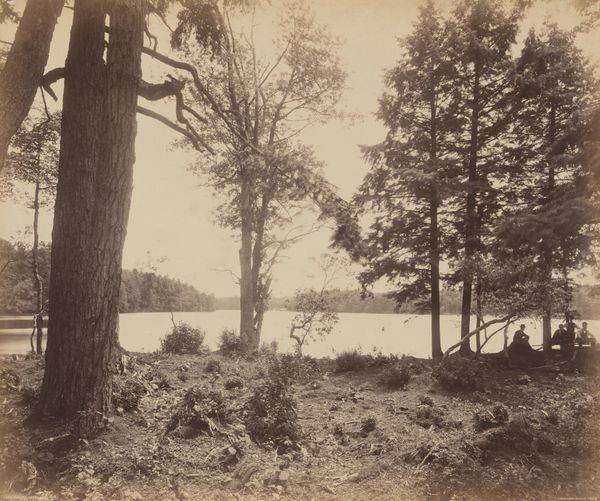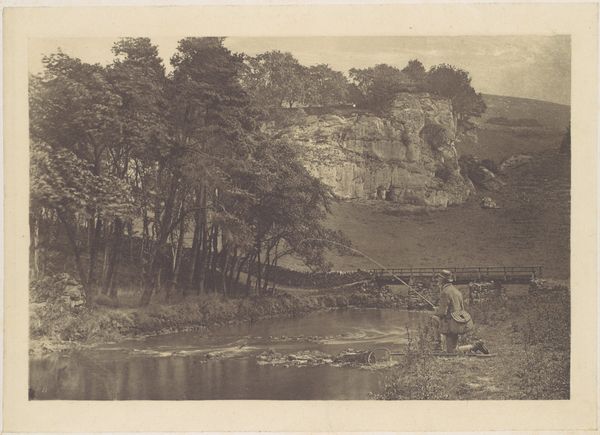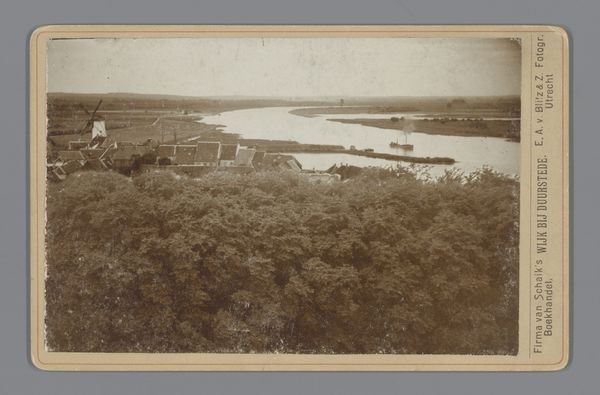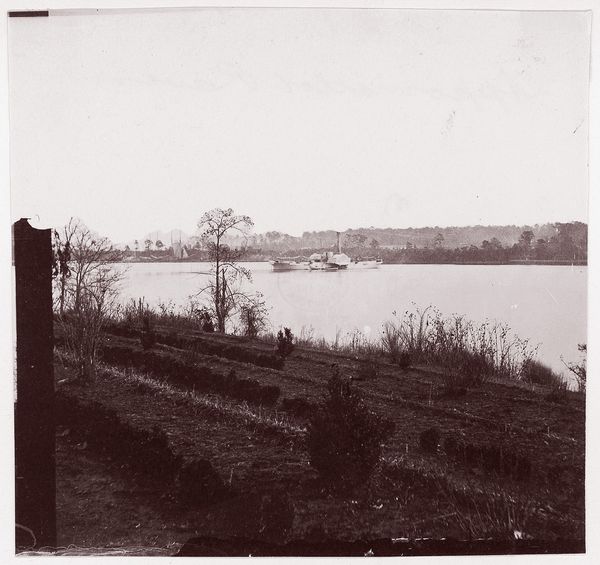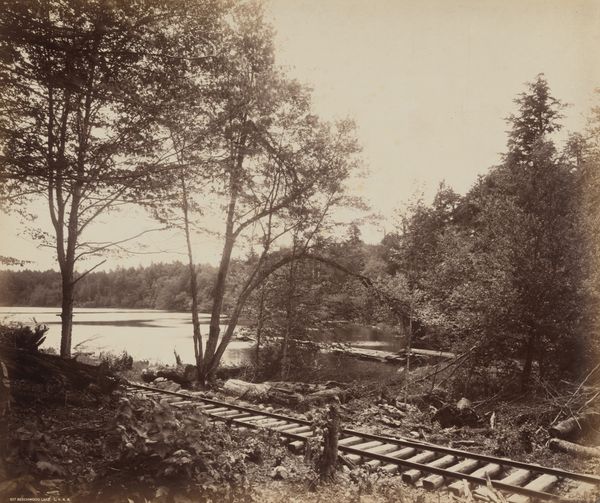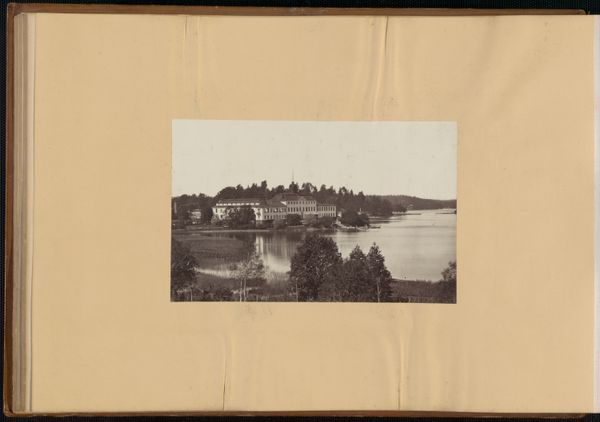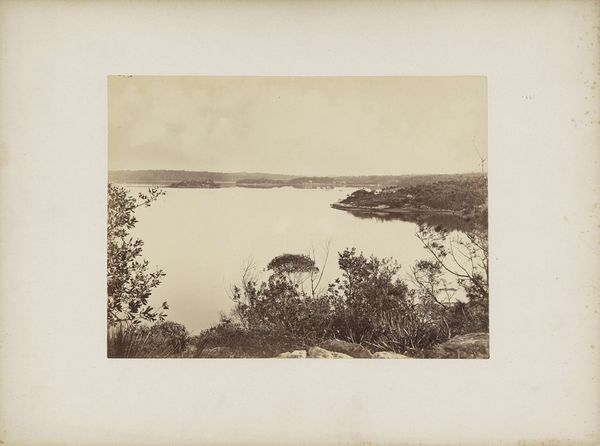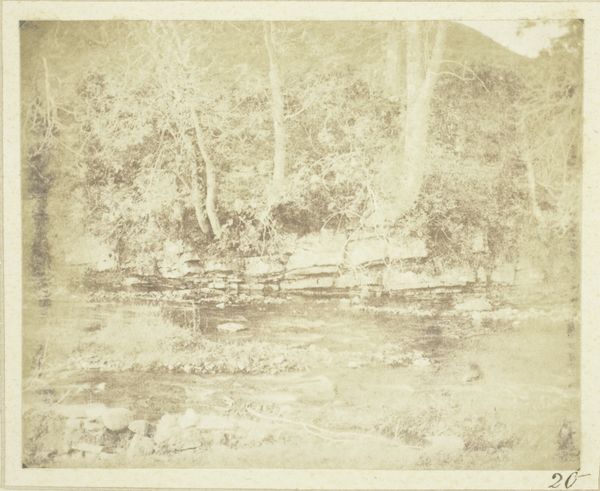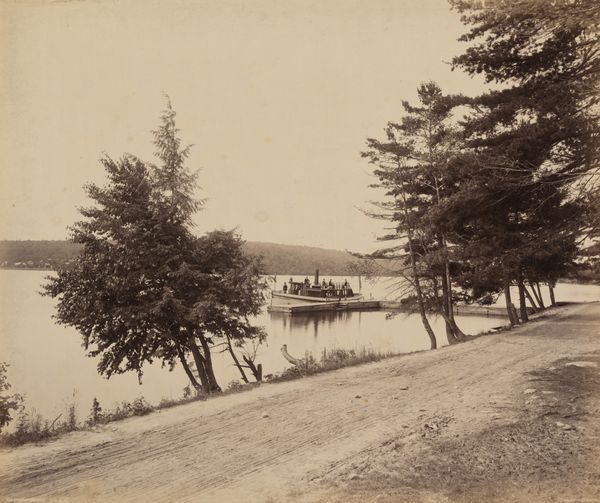![[Civil War View] by Thomas C. Roche](/_next/image?url=https%3A%2F%2Fd2w8kbdekdi1gv.cloudfront.net%2FeyJidWNrZXQiOiAiYXJ0ZXJhLWltYWdlcy1idWNrZXQiLCAia2V5IjogImFydHdvcmtzLzllMWY5MDg0LWE4ODQtNGM2Mi05OGE2LTY4YjM2NTBiMDc1MS85ZTFmOTA4NC1hODg0LTRjNjItOThhNi02OGIzNjUwYjA3NTFfZnVsbC5qcGciLCAiZWRpdHMiOiB7InJlc2l6ZSI6IHsid2lkdGgiOiAxOTIwLCAiaGVpZ2h0IjogMTkyMCwgImZpdCI6ICJpbnNpZGUifX19&w=3840&q=75)
photography, gelatin-silver-print
#
landscape
#
photography
#
gelatin-silver-print
#
hudson-river-school
Copyright: Public Domain
Curator: Looking at this serene gelatin-silver print titled "[Civil War View]," created in the 1860s, what first comes to mind for you? Editor: A sense of haunting quiet. The soft sepia tones create an almost melancholic atmosphere, a stark contrast with what I know of this time. Is it truly just a landscape? Curator: I think Roche’s "Civil War View," currently residing here at The Met, offers more than just a peaceful vista. While the aesthetic is indebted to the Hudson River School, romanticizing the American landscape, it also invites a powerful confrontation with a war deeply embroiled in questions of identity, race, and power. Look closer; can you feel the echoes of displacement? Editor: Absolutely, now that you mention it. I see now the broken trees, acting almost as totems of past conflict, their repeated presence a mournful echo, a visual stuttering across the vista. There's also something so symbolically charged about the image’s hazy light… it softens what I suspect must have been such a hard-won place. Curator: Consider that landscape photography during the Civil War served a dual purpose: documentation and propaganda. On one hand, these images captured the devastation and offered visual “proof” of battles; on the other, they framed the landscape as something worth fighting for, essential to national identity despite the internal fracturing. The romantic ideals clash horribly with the violence enacted on the land and people, most notably the enslaved. Editor: The contrast you mention adds complexity. The artist evokes these associations through careful image control – a muted record that quietly emphasizes resilience, while its lack of obvious war detritus is a signifier for potential forgetting and absolution, themes that reverberate today as we debate monuments and cultural memories of the conflict. What strikes you most? Curator: I’m struck by how a seemingly neutral landscape can carry such heavy ideological baggage. This image demands we ask ourselves whose land we're seeing, whose stories are amplified, and whose are erased in the narrative of American progress. Editor: And for me, the photograph now stands as an iconic reminder of how enduring the symbolic resonance of land can be, marked by war and remembrance in quiet visual echoes that haunt the space between the image and ourselves.
Comments
No comments
Be the first to comment and join the conversation on the ultimate creative platform.
